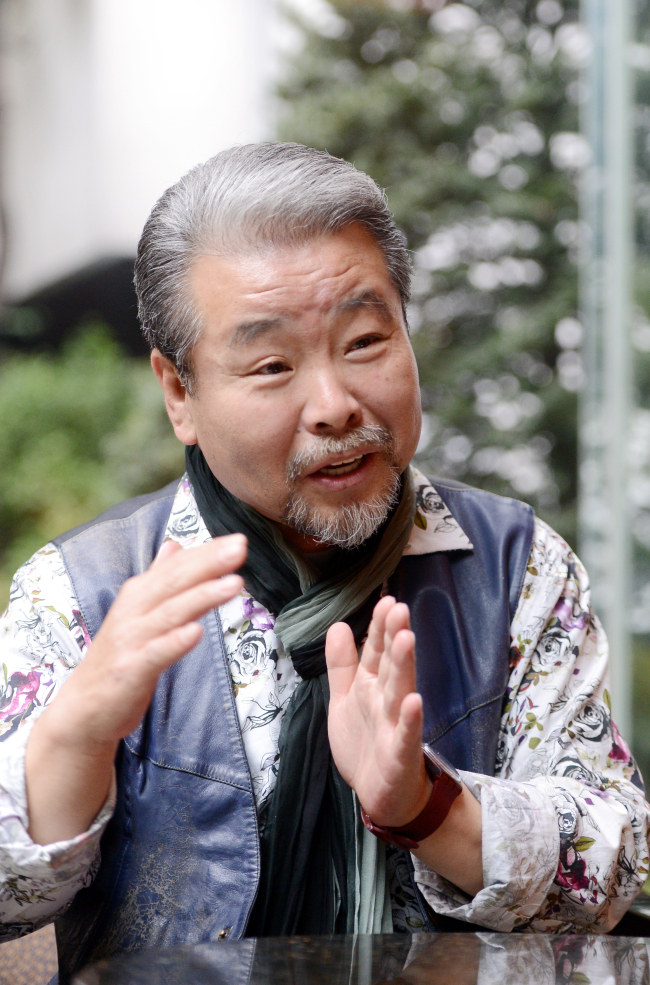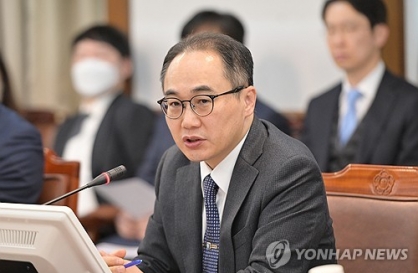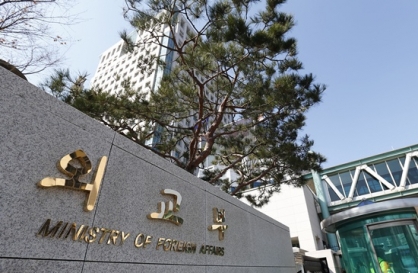Samulnori master looks to next chapter
Kim Duk-soo to hold birthday concert with renowned musicians
By Korea HeraldPublished : Oct. 22, 2012 - 20:12
One night in 1978 in a small theater in Daehagno, northern Seoul, four men were quivering before their first performance of a very new school of gugak, or Korean traditional music.
They were about to use only four types of percussion instrument ― jing (gong), buk (drum), kkoengwari (hand-held gong) and janggu (hourglass-shaped drum) ― focusing on the dynamic among them. For decades they had been struggling with the falling popularity of gugak and for them, this was the last straw.
The rest is history: The new genre of music, later called “samulnori,” named after the group’s name, became the byword of the new gugak so quickly that some youngsters thought it was a centuries-long tradition. It was taught at schools around the world and impressed the most intelligent and finickiest critics and audiences with its powerful atmosphere.
The band, led by janggu player Kim Duk-soo, trotted around the world promoting not only Korean music but the Korean spirit. People clapped or stamped to the music’s unfamiliar but energetic rhythm. Some would shake their heads, chant their own tunes and stand up and dance.
“That was ‘sinmyeong,’ the dynamics of Korean entertainment,” Kim said in an interview with The Korea Herald on Tuesday.
Sinmyeong, or enlightenment, when associated with “han,” the unique Korean sentiment of a suppressed, but hopeful desire for justice, becomes explosive, he said.
“Music was our language and without having to explain anything about Korean culture, people understood with their heart when they left,” he smiled.
They were about to use only four types of percussion instrument ― jing (gong), buk (drum), kkoengwari (hand-held gong) and janggu (hourglass-shaped drum) ― focusing on the dynamic among them. For decades they had been struggling with the falling popularity of gugak and for them, this was the last straw.
The rest is history: The new genre of music, later called “samulnori,” named after the group’s name, became the byword of the new gugak so quickly that some youngsters thought it was a centuries-long tradition. It was taught at schools around the world and impressed the most intelligent and finickiest critics and audiences with its powerful atmosphere.
The band, led by janggu player Kim Duk-soo, trotted around the world promoting not only Korean music but the Korean spirit. People clapped or stamped to the music’s unfamiliar but energetic rhythm. Some would shake their heads, chant their own tunes and stand up and dance.
“That was ‘sinmyeong,’ the dynamics of Korean entertainment,” Kim said in an interview with The Korea Herald on Tuesday.
Sinmyeong, or enlightenment, when associated with “han,” the unique Korean sentiment of a suppressed, but hopeful desire for justice, becomes explosive, he said.
“Music was our language and without having to explain anything about Korean culture, people understood with their heart when they left,” he smiled.

Now facing “hwangap,” the 60th birthday marking the “return of fortune to zero,” Kim is ready to shake up the scene once again with an anthological performance and declaration of change.
A celebratory concert will be held on Oct. 27-28 at Sejong Center for the Performing Arts, performed in two parts. The first will feature an anthology of Kim’s music in the most traditional way.
It will reflect the personal history of Kim ― from the moment he started as a musician at the age of five, following his father and his friends’ life as a wandering musician, to when he emerged as a prodigy of gugak as a teenager and the creation of samulnori as well as his life on the road promoting his music for more than 150 days a year.
In the second part, Kim’s friends from all around the world will jam together.
Internationally acclaimed artists such as bassist Jamaaladeen Tacuma, wind player Wolfgang Puschnig and gugak powerhouses such as Ahn Suk-seon and Oh Jeong-hae as well as Kim Ri-hye, the master’s wife and celebrated Korean traditional dancer, will join him on the stage.

“More than 60 performers will be supporting me on stage and we will create a synergy of energies,” Kim said.
For Kim, his 60th birthday bash-performance is more than a simple celebration. It will be the declaration of another chapter for him.
“I am starting everything fresh. For the past 34 years I have concentrated on setting up the structure of samulnori ― make out the rules, draw the cores and develop curricula. But now it is time for me to push things to the next level,” he said.
His next challenge will be bringing a modern Western vibe to the very Korean music. He has long thought about it and has collaborated with young musicians from different fields for a long time. One such album, “Mr. Janggo,” features a sexy, Western-groove-yet-classical samulnori thanks to the relentless energy of Kim and contemporary artists such as hip-hop artist Lee Ha-neul; jazz pianists Kim Kwang-min, Han Sang-won, Jung Won-young; rock band Next and others.
He said he is determined to create more “current” sounds with other artists to prove to the world that “the most Korean thing is the most global thing.”
“I don’t think music should be stuck in the same routine for hundreds of years for the sake of tradition. It is more of a living thing that we breathe and feel,” he said.
“I will work on digitizing many of my recordings. I will supply more samulnori scores to other countries. I am also gearing up to teach more students while I serve as professor of entertainment at the Korea National University of Arts,” he said.
“I still have a long way to go. But 60 is the new 30!” he said with a laugh.
By Bae Ji-sook (baejisook@heraldcorp.com)
-
Articles by Korea Herald




![[Weekender] Korean psyche untangled: Musok](http://res.heraldm.com/phpwas/restmb_idxmake.php?idx=644&simg=/content/image/2024/05/02/20240502050841_0.jpg&u=)

![[Eye Interview] 'If you live to 100, you might as well be happy,' says 88-year-old bestselling essayist](http://res.heraldm.com/phpwas/restmb_idxmake.php?idx=644&simg=/content/image/2024/05/03/20240503050674_0.jpg&u=)











![[Herald Interview] Director of 'Goodbye Earth' aimed to ask how we would face apocalypse](http://res.heraldm.com/phpwas/restmb_idxmake.php?idx=652&simg=/content/image/2024/05/03/20240503050732_0.jpg&u=)
